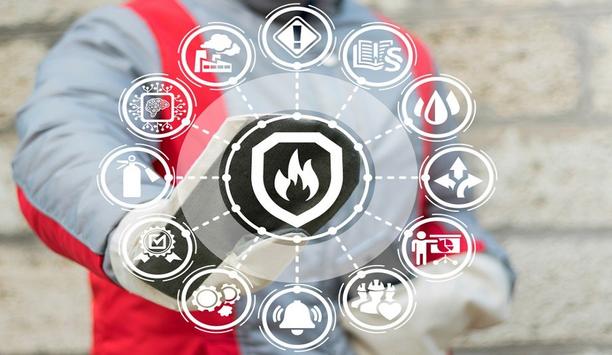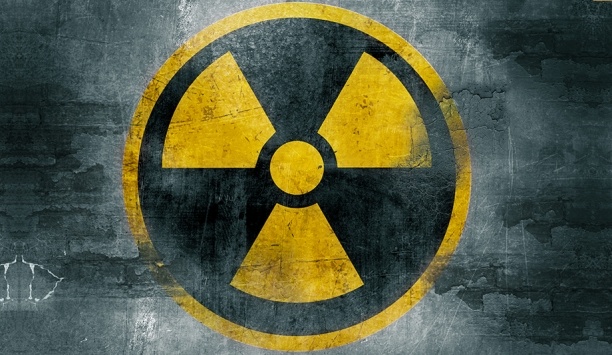 |
| 2008 saw a 15% increase in UK commercial fire damage |
After a 15 percent increase in commercial fire damage in the UK throughout 2008, the need for effective preventative fire protection is growing. Ian Moore, Managing Director of D-Tec (Detector Technologies Limited) explains how Video Smoke Detection (VSD) can help.
Now more than ever organisations should carefully consider the impact that large scale fires, left unchecked, can have on their operations and take preventative measures, especially when it comes to the targeted protection of key assets such as a multi-million pound production line. Sadly, many businesses never recover from a major incident due to the delay in rebuilding and associated customer loss.
The need for vigilance is highlighted by the fact that according to the Association of British Insurers (ABI) the insured cost of commercial fire damage in the UK in 2008 cost £865 million, up 15 percent on the previous year. There is also the requirement to deliver an early warning of incidents to non-commercial premises, especially historic buildings whose structure and contents, if ravaged by fire, are in many cases irreplaceable.
Extending the scope of Video Smoke Detection
It is perhaps not surprising, therefore, that CCTV-based Video Smoke Detection is being applied in an ever-wider range of scenarios where timing is critical to minimise damage. The reality is that it is now possible to consider Video Smoke Detection as a viable option for a multitude of projects whether it be the asset protection of key areas of a historic building, a manufacturing plant, the main thoroughfares of a shopping centre, the atrium of a corporate headquarters, the roof of a large department store or monitoring the corridors of an office development.
Ease of installation and minimal impact make Video Smoke Detection suitable for a multitude of applications |
Video Smoke Detection is fast making its mark in a multitude of projects - both new build and refurbishment - by virtue of its ease of installation and minimal impact: CCTV cameras can be placed in unobtrusive positions so that the design of a building is not compromised with an unsightly object positioned on the ceiling. There is also of course the enhanced performance compared to more traditional alternatives.
So how does Video Smoke Detection actually work? In practice, this approach to fire detection utilises standard CCTV images in real-time that can then be analysed by specialised image processing software. This software seeks out the particular pattern that smoke produces by applying extensive detection and known false alarm algorithms. The cameras used can be pre-existing; in which case there is no disruption or installation cost, giving a greater return on investment.
BY programming the smoke detection software to look for anticipated motion patterns of smoke over a specified area within a camera image, and looking for pixel changes, VSD has the potential to deliver an exceptionally fast response - typically in seconds. Crucially, once smoke has been detected the system can alert the operator as well as deliver a visual representation of the smoke on the system's monitor.
This ability to effectively detect smoke at the source, unlike more traditional methods, means that VSD does not have to rely on the smoke reaching a detector and is therefore unaffected by distance.
Commercial necessities of Video Smoke Detection
Returning to the considerable risks associated with unplanned downtime and loss of key assets, it is estimated that roughly 1 in 5 businesses suffer a major disruption every year and 80 percent of those affected by a major incident close within a month.
In terms of the commercial application of Video Smoke Detection, one German manufacturer previously lost a multi-million pound production line due to a major fire, which impacted on their ongoing operations. Consequently, they are determined to have measures in place to ensure that, if such an incident happens again, they can take rapid action using VSD and their on-site fire officers.
Another area where Video Smoke Detection is proving its worth is in power stations, specifically monitoring all important turbine halls, where the potential for disruption not only to the power station but also to the electricity consumers it serves is tremendous. VSD, because of its careful analysis of CCTV images, is ideally suited to this high-temperature, dirty environment where at any time a combination of superheated steam, leaking lubrication oil and - in a coal-fired power station - superfine coal dust can be released into the atmosphere. By contrast this is an environment where conventional heat and smoke detection systems are wholly unsuitable, as all alarm conditions are present in normal operating situations.
Using Video Smoke Detection to protect historic buildings
Early warning of potential fire adds crucial time for saving historic buildings |
When it comes to non-commercial, historic buildings, a project in a 14th century Czech chapel underlines the potential of this technology for application in potentially sensitive locations. In this case it was imperative that the chosen solution would not impact negatively on the aesthetics of the chapel so, for example, an aspirated system which involved extensive tubing to draw in air from the immediate area was one of the options ruled out at an early stage.
After surveying the immediate area, it was decided all that was required in the vicinity of the chapel was a single CCTV camera. To minimise any visual impact this was simply positioned at the entrance window of the chapel where there was already a climate control unit. As a result, no additional unsightly cabling was needed for the project and the networked VSD system was fitted elsewhere, out of sight of visitors to the chapel.
Crucially, the main driver for adopting Video Smoke Detection was the irreplaceable nature of many of the artefacts held in the chapel as any major fire would be disastrous in terms of what could be lost; consequently the ability to provide fast track alerts - in seconds - regarding any potential fire was extremely attractive.
Active asset protection from fire
In the end, with regards to asset protection, the effectiveness and ease of installation and maintenance of a VSD system, particularly in the shape of networkable solutions, makes a compelling case to deliver the early warning necessary to minimise the very real risks associated with fire and the consequences of unplanned downtime.
Ian Moore - D-Tec (Detector Technologies Limited)















